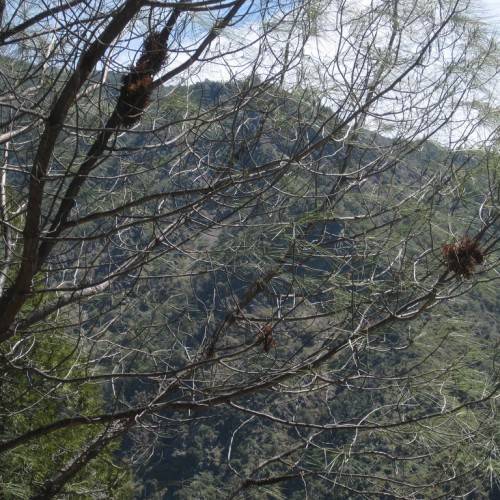
Douglas Fir Dwarf Mistletoe
Arceuthobium douglasii
Watering:
Minimal
Hardiness Zone:
Sun:
full sun
Growth Rate:
Low
Drought Tolerant:
Yes
Thorny:
Yes
Invasive:
Yes
Care Level:
Medium
watering
Douglas Fir Dwarf Mistletoe (Arceuthobium douglasii) should be watered every 3-4 days and should receive approximately 1 inch of water each time. It is best to water in the morning, allowing the water to be fully absorbed by the soil and exposed to the sun for successful growth. Additionally, during particularly hot or dry weeks, it is beneficial to increase the amount of water, while making sure not to over-saturate the soil. It is important to let the soil dry out between waterings in order to prevent water-logging of the roots.
sunlight
Douglas Fir Dwarf Mistletoe (Arceuthobium douglasii) is an evergreen obligate parasite that obtains its nutrients by attaching to the branches of its primary host, Douglas-fir trees. As an obligate parasite, it lacks photosynthetic abilities and entirely relies on its host for water and nutrients. However, Douglas Fir Dwarf Mistletoe still requires the same amount of sunlight as other species in order to thrive. It is best suited to areas of full sun, with exposure to 6 to 8 hours of direct sunlight each day. In areas of partial shade, it may not perform as well and may fail to produce flowers and fruits, affecting its reproductive success. Additionally, when the trees on which it is growing become too shaded by taller trees around them, Douglas Fir Dwarf Mistletoe may suffer from lack of light, leading to death. For these reasons, it is important to properly site Douglas Fir Dwarf Mistletoe in areas where it will receive adequate full sunlight.
pruning
Douglas fir dwarf mistletoe (Arceuthobium douglasii) is best managed with selective pruning. Pruning should take place in early spring, when the new shoots are beginning to flower. Pruning should be to remove only mistletoe-infected branches. The fungus infects the branch and can spread to other areas so it is important to prune infected branches during the flowering period. In addition, pruning of dead or dying branches of the tree that do not have mistletoe can help reduce the mistletoe's spread as well.
